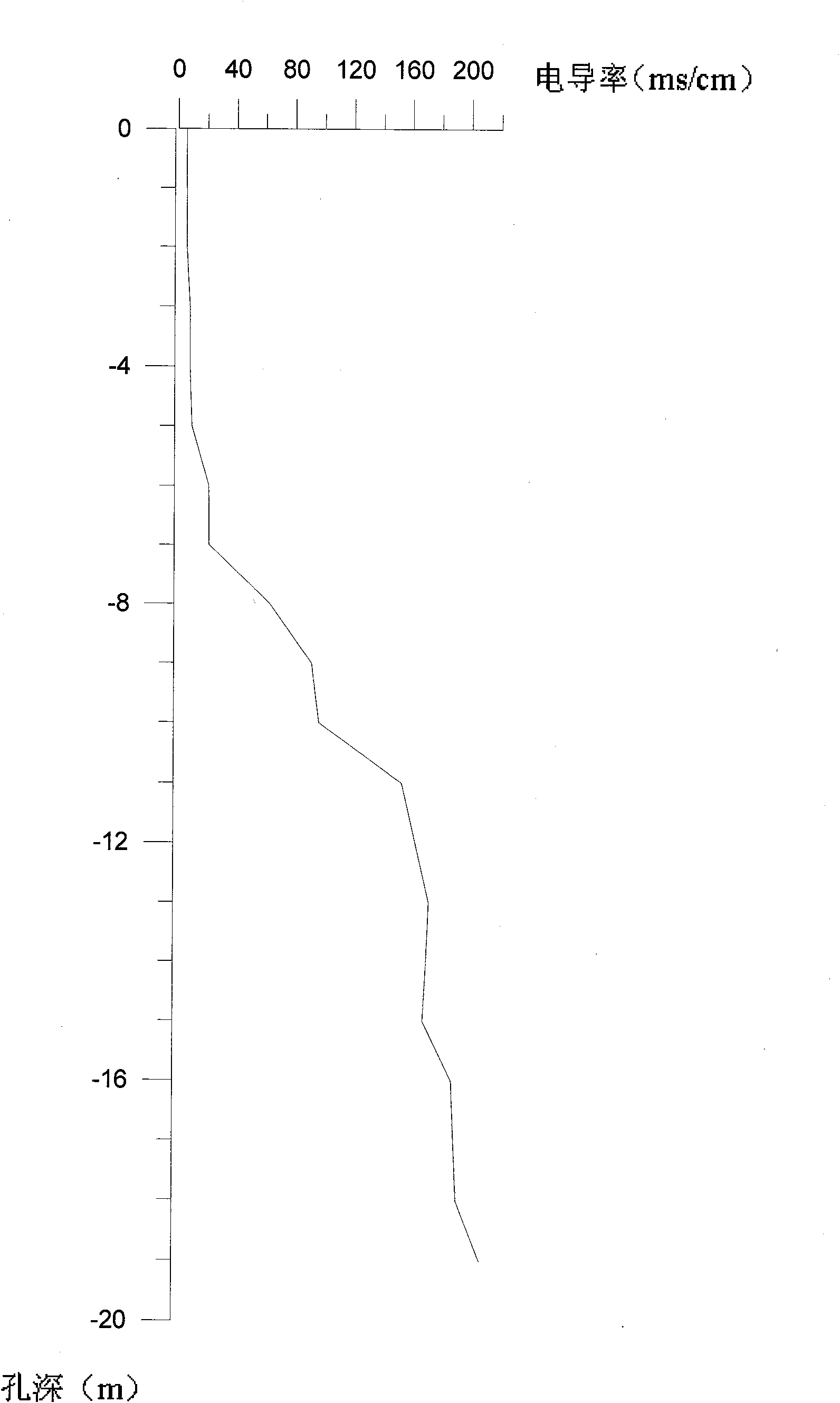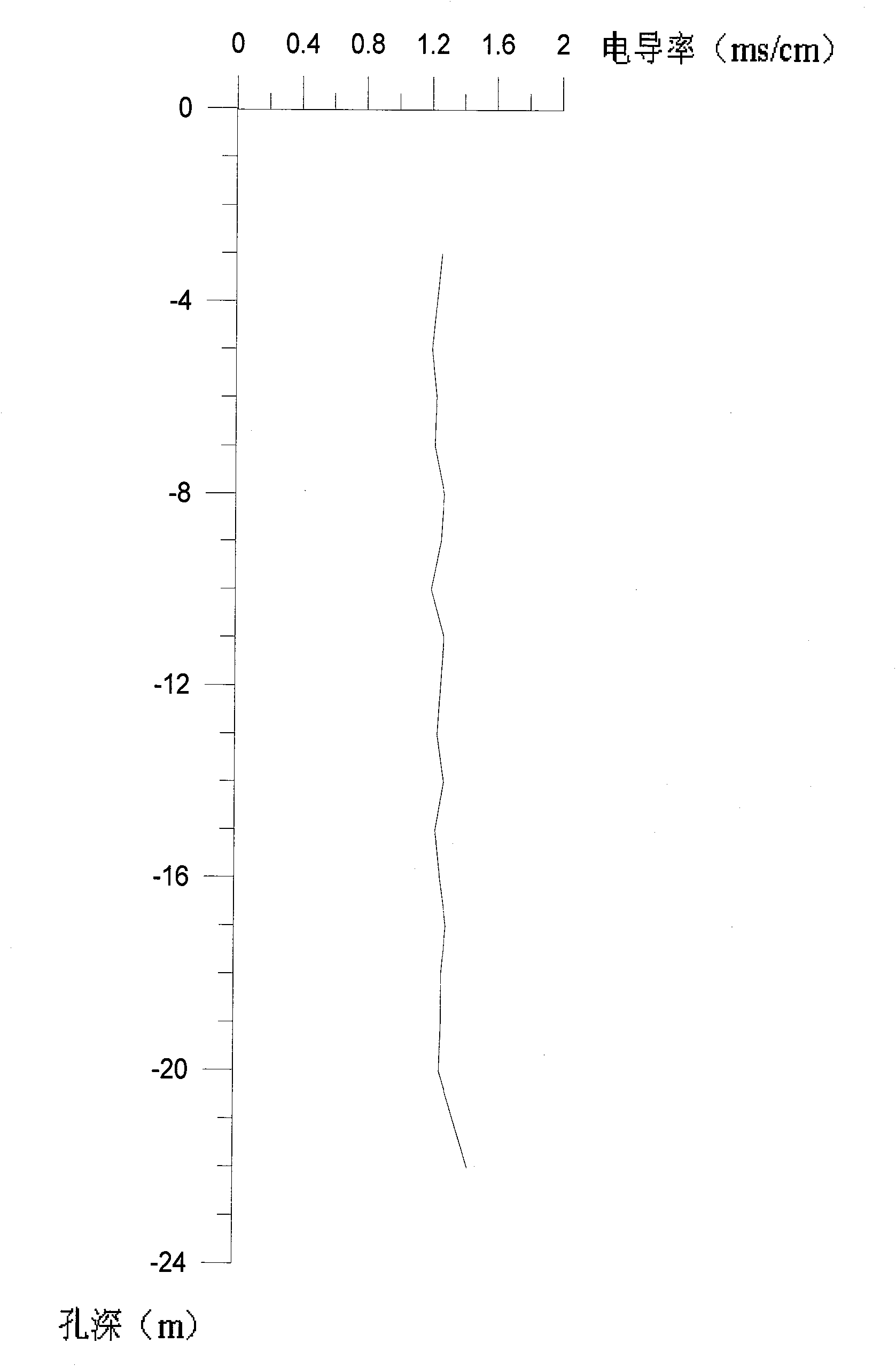Seawater invasion monitoring method and distributed conductivity geological disaster monitoring device
A technology for seawater intrusion and geological disasters, applied in the direction of material resistance, etc., can solve the problems of heavy workload, poor data processing accuracy, and cumbersome process, and achieve the effect of high accuracy
- Summary
- Abstract
- Description
- Claims
- Application Information
AI Technical Summary
Problems solved by technology
Method used
Image
Examples
Embodiment 1
[0058] The schematic diagram of the host circuit image 3 As shown, the host is arranged in a safe place near the geological disaster body, including:
[0059] The electrode selection circuit is used to select the test electrode to be energized;
[0060] The electrode power supply circuit is used to energize the selected electrode, and the output of the electrode power supply circuit is a square wave pulse with a frequency of 1000 Hz, positive and negative pulses with the same amplitude, and a duty cycle of 50%;
[0061] The electrode switching circuit is used to switch the selected electrode to the electrode power supply circuit for power supply according to the selection result of the electrode selection circuit;
[0062] The signal sampling circuit is used to collect signals from the electrode power supply circuit after power-on and the circuit formed by the well fluid between the electrodes and the electrodes;
[0063] The memory is used to store the conductivity value a...
Embodiment 2
[0097] Step s1, deploying the host computer and distributed measurement electrodes. Arrange the host in a safe place near the geological disaster body, arrange the distributed measurement electrodes in the seawater intrusion observation well of the geological disaster body, and record the well depth where each electrode is located; the distributed measurement electrodes are perpendicular to the ground in the observation well Distributed along the axial direction.
[0098] Step s2, select the test electrode, and energize the selected electrode, so that the electrode forms a loop through the well fluid, and measure the voltage across the sampling resistor connected in series in the loop. In this embodiment, a square wave pulse with a frequency of 1000 Hz, positive and negative pulses with the same amplitude, and a duty ratio of 50% is used to energize the selected electrodes.
[0099] Step s3, obtaining the conductivity value of the well fluid at the electrode according to the ...
Embodiment 3
[0116] The distributed electrical conductivity geological disaster monitoring device of the present invention has been installed and used in some areas of Beidaihe and Nandaihe, and has achieved good results. The actual measurement results in this area will be described below.
[0117] 1. Table 2 shows the test data of the H15 observation hole in the Beidaihe seaside shrimp pond. The depth of the well is 20 meters, the water level is 0 meters, and the measured depth is 19 meters. Figure 14 It is the "well depth-conductivity curve" diagram of H15 observation hole drawn according to the test data table.
[0118] Table 2
[0119]
[0120] 2. Table 3 shows the test data of Beidaihe Jinhaiwan Resort North 20 observation hole. The depth of the hole is 23 meters, the water level is 3 meters, and the measured depth is 3-22 meters. Figure 15 It is the "well depth-conductivity curve" diagram of Bei 20 observation hole drawn according to the test data table.
[0121] table 3
[0...
PUM
 Login to View More
Login to View More Abstract
Description
Claims
Application Information
 Login to View More
Login to View More - R&D Engineer
- R&D Manager
- IP Professional
- Industry Leading Data Capabilities
- Powerful AI technology
- Patent DNA Extraction
Browse by: Latest US Patents, China's latest patents, Technical Efficacy Thesaurus, Application Domain, Technology Topic, Popular Technical Reports.
© 2024 PatSnap. All rights reserved.Legal|Privacy policy|Modern Slavery Act Transparency Statement|Sitemap|About US| Contact US: help@patsnap.com










